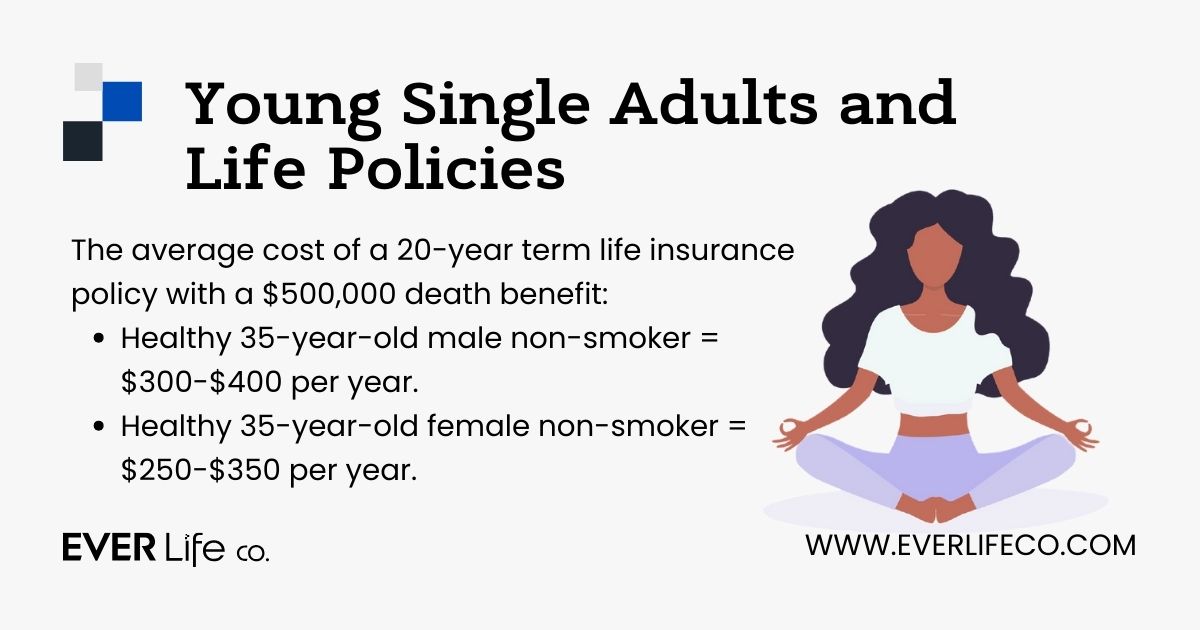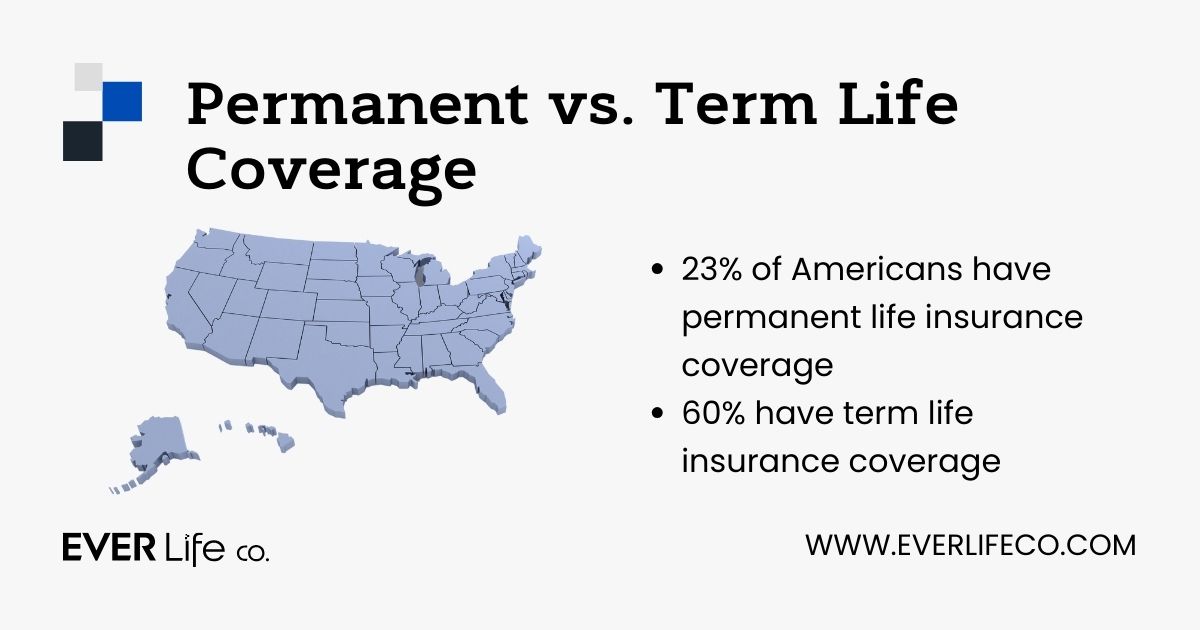Life insurance is vital in financial planning as it provides peace of mind and security for you and your loved ones. However, selecting the right type of life insurance can be challenging, given the various available options.
In this blog, we will examine the different types of life insurance policies and help you understand the benefits and drawbacks of each. Whether you’re looking for a simple term life insurance policy or a more comprehensive permanent one, we will provide the information you require to make an informed decision.
Types of Life Insurance
You can choose from two primary life insurance options—term and permanent.
Choosing between temporary (term) and permanent life insurance (whole and universal) depends on the individual’s specific needs and goals. Evaluating the coverage length and the desired policy limit before deciding is essential. A professional agent can provide a comprehensive list of options and help guide the individual in selecting the right policy.
1. Term Life Insurance
Term life insurance is a flexible coverage option that allows the insured policyholder to choose the length of coverage and policy limit. The premium rate is fixed for the term specified and remains unchanged, providing budget predictability.
Term life insurance policies cover up to 30 years, with death benefits payable to noted beneficiaries if the insured person dies during the term. Policyholders can renew if desired, or the policy will expire at the end of the period.
Key Features
- This policy only provides death benefits and has no cash value.
- Payouts cover healthcare, funeral costs, debts, and mortgage premiums.
- Add-on riders are available to upgrade basic features for an additional charge.
Benefits of Term Policies
- Affordability: These policies are typically less expensive than permanent ones, making standard term life insurance more affordable for those on a budget.
- Flexibility: Term policies are customizable to meet your specific needs, allowing you to choose the coverage period and the required amount for affordable monthly premiums.
- Simple to understand: Term policies are straightforward, making them easy to understand, and they provide a clear solution to protect your family in case of your passing.
- Peace of mind: Term life insurance provides peace of mind, knowing you’ve secured your loved ones financially in the event of your unexpected death.
- Tax benefits: The death benefit paid out to your beneficiaries is generally tax-free, which can significantly help them during a difficult time.
- Convertibility: Some term life insurance policies are convertible to permanent policies, which is beneficial as your insurance needs change over time.
Types of Term Life Insurance
- Decreasing Term Life Insurance is a renewable term policy where the death benefit reduces over time, in line with a mortgage or debt balance. Premiums are lower than Level Term Life Insurance, as the risk decreases with the death benefit. If the policyholder dies before loan repayment, the death benefit covers the remaining balance, financially protecting their loved ones.
- Convertible Term Life Insurance offers the option to convert into permanent life insurance (e.g., whole or universal) during the policy term without further medical underwriting. This policy benefits those who may develop a health condition that makes them uninsurable. The conversion option provides flexibility and security for policyholders as their insurance needs evolve.
- Renewable Term Life Insurance offers the option to extend for another term without requiring a new medical examination. Premiums may increase with each renewal, reflecting the policyholder’s age and higher death risk. These policies offer flexible coverage for a defined period, typically one to thirty years, enabling policyholders to adjust their coverage to meet changing needs.
Who is Term Life Insurance For
Term life insurance is best suited for individuals with a temporary need for life insurance coverage. Here are a few examples:
- Young parents: If you have dependent children, term life insurance can provide financial protection for your family in the event of your unexpected death. It can help cover childcare, education, and living expenses.
- Homeowners with a mortgage: If you own a home and have a mortgage, a term policy can help ensure that your family can continue to make mortgage payments in the event of your death.
- Business owners: Term life insurance can protect a business owner’s family in the event of their death. It can help cover expenses such as business debts, salaries for key employees, and the cost of finding a replacement.
- Those with a limited budget: Term life policy premiums are typically lower than those for permanent insurance, making it a good option for those with a limited budget.

2. Permanent Life Insurance
Permanent life insurance is a type of coverage that remains in effect for the insured’s entire life, provided that the policyholder continues to pay the premiums. Despite being more expensive than term life insurance, permanent life insurance offers a more comprehensive and long-lasting coverage option.
Key Features
- Permanent policies provide death benefits and access to cash benefits.
- Payouts cover healthcare, funeral costs, debts, and mortgage premiums.
- Add-on riders are available to upgrade basic features for an additional charge.
Benefits of Permanent Policies
- Lifetime coverage: Permanent life insurance offers coverage for the insured’s entire life as long as they pay all their premiums. This makes permanent coverage an excellent option for those who want to protect their loved ones no matter when they pass away.
- Cash value growth: Permanent policies have a cash value component that grows over time. Policyholders can access their cash value gains during their lifetime to cover a variety of purposes, such as paying premiums, borrowing against the policy, or supplementing retirement income.
- Premiums remain level: Permanent life insurance policies typically have level premiums that do not increase as the policyholder ages, making it easier to budget for payments.
- Tax benefits: The cash value component of a permanent life insurance policy grows tax-deferred, meaning policyholders don’t have to pay taxes on the growth until they withdraw the funds.
- Various types: Permanent life insurance comes in multiple options, such as whole life, universal life, and variable life. These different types offer varying levels of flexibility and risk, allowing policyholders to choose a policy that best meets their needs.
Types of Permanent Life Insurance
There are two common types of permanent coverage.
- Whole Life Insurance: This policy offers lifelong coverage with guaranteed benefits if the policyholder pays the premiums in full. It also includes investment options that accumulate cash value over time, which can cover premium payments, be used to borrow against the policy, or supplement retirement income. Due to the investment feature, whole life insurance is typically more expensive than term policies.
- Universal Life Insurance: A universal policy offers a blend of the benefits of whole-life and term life insurance policies. It combines the ability to invest and accumulate tax-deferred savings (with the flexibility of term life insurance to decide how to invest a portion of your premiums and utilize your savings. Universal life policies also have a variety of subtypes, including indexed universal life, variable universal life, and guaranteed universal life.
Other Types of Policies for Permanent Coverage
Simplified Issue Life Insurance: This policy does not require a medical exam as part of the underwriting process. Instead, the insurer may ask simple health questions to determine the policyholder’s risk level.
Simplified issue policies typically have lower coverage amounts and higher premiums than traditional policies that require a medical exam. This policy can be an alternative for individuals who face difficulty obtaining standard life coverage due to poor health issues or prefer a simpler application process.
Final Expense Insurance: Final expense policies cover the cost of a policyholder’s funeral and other end-of-life expenses. Also known as burial life insurance, these policies typically offer coverage amounts ranging from $5,000 to $25,000 and are available to individuals between 50 and 85.
Final Expense Life Insurance policies don’t require a medical exam and often have simplified underwriting, making them accessible to individuals who may have difficulty obtaining traditional coverage due to health issues.
Premiums for these policies are usually lower than other life insurance policies, but the coverage amount may not deliver adequate protection.
Who is Permanent Life Insurance For
- Young couples and young single adults: Permanent policies work for individuals with long-term needs, such as those who want to provide financial protection for loved ones after their death or those who wish to use insurance as a part of their estate planning strategy.
- Those who want cash-value life insurance: Permanent policies provide a way to accumulate cash-value funds over time, as permanent life insurance policies offer an investment feature that allows the policyholder to build cash value over time.
- Those who want lifetime coverage: Permanent coverage protects the policyholder for their entire life without needing conversion later, as they would with a term policy if they outlive it.
- Individuals with a high net worth: Using an insurance policy is one way to tax-free transfer their wealth to beneficiaries.
- Business Owners and Home Buyers: Some lenders allow you to use a life insurance policy as collateral for home and business loans. There may be restrictions on the type of policy a lender will accept.

Factors to Consider When Choosing a Life Insurance Policy
Choosing the right life insurance policy is crucial in securing your financial future and protecting your loved ones. Here are some factors to consider when selecting a life insurance policy:
- Coverage amount: Determine the coverage you must provide for your dependents and beneficiaries, considering your current and future financial obligations.
- Policy type: Decide which policy best suits your coverage goals—term, permanent, or combination. Do you require an investment portion in your policy? How much risk are you willing to take with plans linked to market conditions? Your policy type should match your priorities.
- Period of time: Decide the time frame of your coverage. Do you need short-term coverage to stand as security for your debt? Or do you want a whole life plan for future wealth transfer and estate planning?
- Premiums: Consider the cost of premiums and how they fit into your budget. Be sure to get quotes from different insurance companies to compare pricing.
- Health status: Your health status will affect the type of policy and premiums you are eligible for. Be prepared to provide medical information during the application process. Your family history will also factor in the approval decision of your underwritten policy.
- Age: Your age can also impact the type of policy and premiums you are eligible for. Generally, younger applicants have lower premiums than older applicants because of their life expectancy. Younger applicants can also benefit from the minimum interest rate for affordable premiums.
- Policy features: Look into the policy features and options, such as riders or add-ons, to see if they align with your needs and financial goals. How will the extra cost of upgrading your policy ensure comprehensive coverage?
- Insurance company reputation: Research the reputation and financial stability of the insurance company before purchasing a policy. Where you buy your policy is essential in your coverage decision as you’re searching for a company that can cover its obligations to you.
By considering these factors and taking the time to research and compare different policies, you can make an informed decision and choose the right policy for you and your family.
Conclusion
Choosing the right insurance policy can be complex and vital, impacting your financial future and providing stability for your loved ones. Various types of life insurance policies are available, each with unique features and benefit options.
Term life insurance policies offer affordable coverage for a specified period, while permanent life insurance policies provide lifelong protection and cash value accumulation. There are also specialized policies such as final expense insurance and simplified issue life insurance.
To choose the best policy for your needs, consider factors such as your financial obligations, health status, age, and budget and the policy features and options offered by different insurance companies.
Ultimately, investing in a life insurance policy can provide invaluable protection for you and your loved ones, ensuring they are financially secure in the event of your unexpected death. With careful research and consideration, you can find the right policy to suit your needs and provide you with the ease of mind that comes with being adequately insured.






